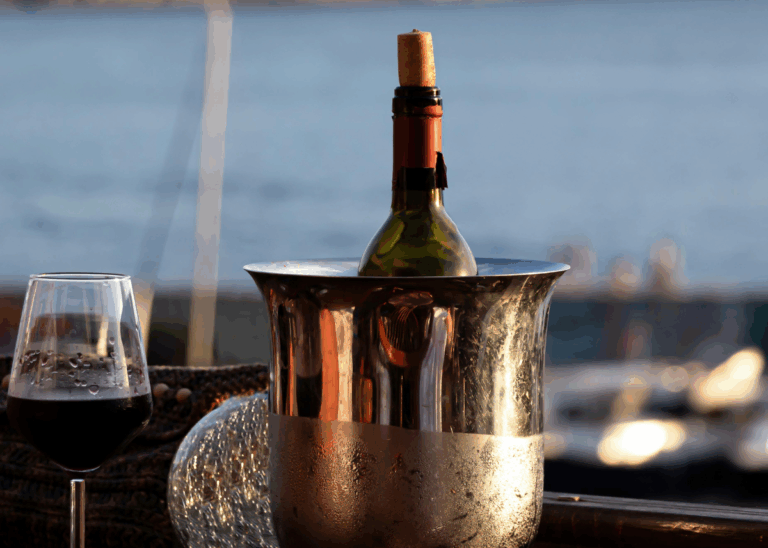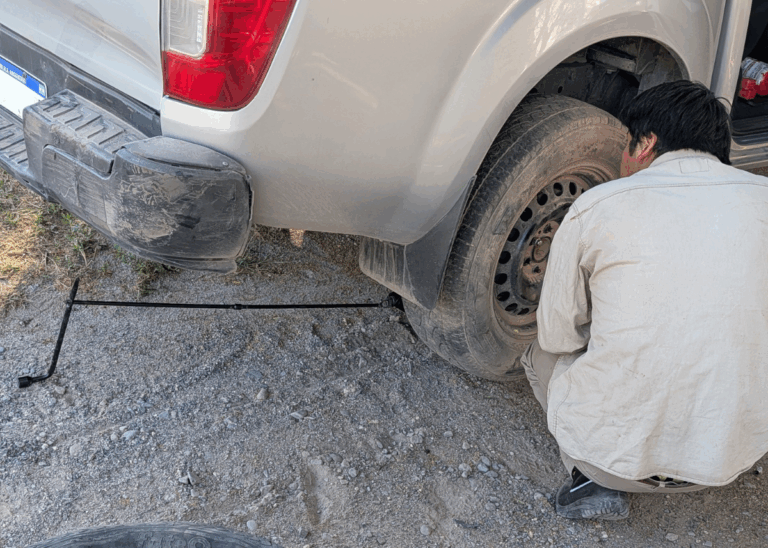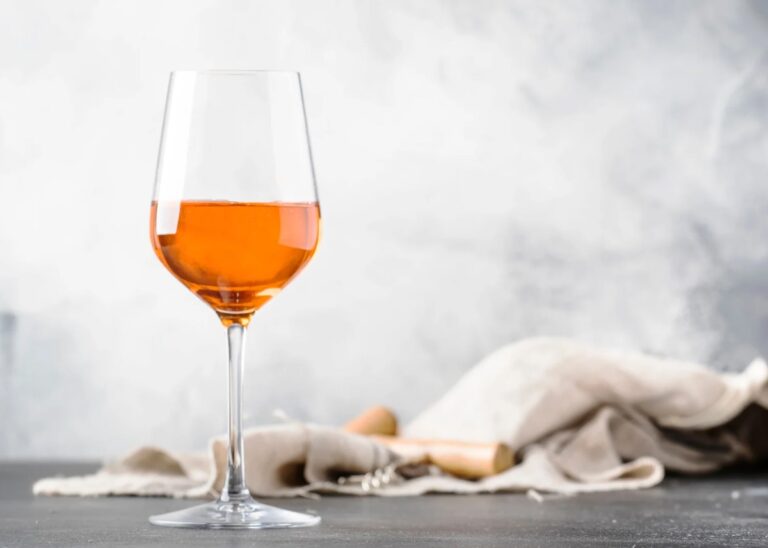[et_pb_section fb_built=”1″ _builder_version=”4.16″ _module_preset=”default” global_colors_info=”{}”][et_pb_row _builder_version=”4.16″ _module_preset=”default” global_colors_info=”{}”][et_pb_column type=”4_4″ _builder_version=”4.16″ _module_preset=”default” global_colors_info=”{}”][et_pb_video src=”https://youtu.be/FYC5GSoMIf8″ _builder_version=”4.26.1″ _module_preset=”default” width=”75%” width_tablet=”85%” width_phone=”100%” width_last_edited=”on|phone” module_alignment=”center” global_colors_info=”{}”][/et_pb_video][et_pb_text _builder_version=”4.27.0″ _module_preset=”default” hover_enabled=”0″ global_colors_info=”{}” sticky_enabled=”0″]
Transcript:
00:00:00:00 – 00:00:24:22
Hello, bonjour, and welcome to your new Bonner Private Wines video where we learn about wine together weekly. I’m your host, Julien, Bordeaux-trained winemaker. In a world that’s getting into more and more trouble every day. And that’s getting warmer by the month, the world of wine is doing well. Thank God we have wine to unwind and relax and cool down a little.
00:00:24:24 – 00:00:58:21
Thanks to skillful winemakers who pay attention to every detail of wine growing and fermentation and barrel maturation and everything else, wine as a whole is getting better and better every year. But one obstacle we are facing is the rising alcohol level in our vinos. We discussed this in detail last week. Today I want to talk about how we can reduce the alcohol content of wine so it doesn’t become a hard liquor eventually.
00:00:58:23 – 00:01:25:24
And too hot, too powerful to be enjoyable. It’s going to be a little bit technical, but bear with me, I promise it’s fascinating and I’ll make it super simple and understandable as usual. I’ll also cover the question I promised I would answer last week. How high an alcohol level will wine eventually reach? Are we going to get 25% alcohol wines when the earth is five degrees warmer?
00:01:26:01 – 00:01:48:17
Let’s talk about it. While they whine, we wine.
00:01:48:19 – 00:02:13:01
The last thing we want as wine consumers is all our red wines to reach 15% plus alcohol and all our white wines and roses to be 13.5 or 14%. By that point, we would need to water them down a little or add a couple ice cubes so they remain refreshing or at least palatable and food friendly, as we saw last week.
00:02:13:03 – 00:02:41:10
Climate change and the evolution of wine styles towards ever fruitier flavors and stronger wines has pushed our wines to be always bigger and bigger. But it’s starting to change as winemakers and wine growers are adapting and putting an emphasis on reducing alcohol levels, to satisfy wine drinkers demands, firstly, and reduce the effects of alcohol. Winemakers and viticulturalists.
00:02:41:10 – 00:03:04:21
The engineers of the wine industry will save the world of wine. It’s certainly not the sommeliers that will. You can see my video about what’s the difference between a winemaker and a sommelier. This aside, three things that can be done to reduce alcohol in wine that we’ll cover here. First, in the winery, we can make an alcohol reduction.
00:03:04:23 – 00:03:22:12
Secondly, we can adapt practices in the vineyards and for the future, developing a new generation of yeasts. So let’s discuss those three points.
00:03:22:14 – 00:04:06:13
At the winery, winemakers have some tools to reduce the alcohol content of wine. But don’t get me wrong, those are not used on most wines yet. When you buy a Bordeaux wine, Chianti, your Argentine Malbec, your Napa cab or Oregon Pinot Noir, their alcohol content is natural as it came out of the vineyard and the fermentation. I won’t get into the details of how these tools work because it’s a little bit technical, but technologies such as reverse osmosis or spinning cones can allow to separate out the alcohol aka ethanol, of wine without having to warm it up or distill it.
00:04:06:14 – 00:04:32:17
Therefore, you preserve all the organoleptic properties of the wine, the flavors, the textures, the aromas. But obtain a lower alcohol content vino without having to heat it up and burn it or boil it. Those techniques exist and are pretty good because so far we want our wines to be a reflection of a region of the terroir of local growing conditions.
00:04:32:17 – 00:05:02:14
Of course, we don’t want to allow those techniques for wines made in regulated appellations like American AVAs, Australian GIs or European AOPs. Those are only used for wines that are sold as low alcohol wines or alcohol free wines, more like specialty products, more than wine really. They’re not quite wine, and you find those more and more in supermarkets and those techniques are used for those products.
00:05:02:14 – 00:05:22:06
But if alcohol levels keep rising to levels, as we’ll discuss in a minute, we might have to commonly start using those techniques on many warm climate wines.
00:05:22:08 – 00:06:10:05
Some vineyard practices can allow to naturally reduce the sugar content of grapes, while still allowing them to reach for aromatic and tannic maturity. It’s quite technical into the viticultural engineering, so I won’t get too much into the nitty gritties here, but remember that it’s hard to make those manipulations in the vineyards to have a lower alcohol, but it’s not impossible to do. Organic biodynamic viticulture often helps here as well, obtaining lower alcohol wines to simplify how that works in organic viticulture, vines struggle more and use more energy for fighting off pests, and therefore they have less energy to produce sugar.
00:06:10:07 – 00:06:53:14
They produce more phenolic and more aromas instead, because those help fighting off pests, which is why organic wines are often more flavorsome and it’s a strong incentive for growers to become certified organic. In addition, in many regions, growers are considering planting new grape varieties, or at least new for their area. Let’s say if in a region that used to grow Cabernet Sauvignon, for example, say Bordeaux or Napa, if you plant grape that requires more heat to ripen, like Grenache or Syrah or Carignan, you will have wines with less alcohol in the end.
00:06:53:16 – 00:07:25:04
Same if you plant Cabernet Sauvignon where Pinot noir used to be grown, like, say, in Oregon, Pinot noir will be grown in Canada or in Norway, Cabernet Sauvignon will be grown in Oregon in Burgundy and Grenache, Carignan and Syrah in Northern California. Potentially. We’re not there yet, but it might be on the horizon.
00:07:25:06 – 00:08:02:05
Finally, new natural tools can be developed and made available to winemakers in the form of new generation of yeasts. Yes, indeed. So far throughout the history of winemaking, winemaking yeasts have been selected and developed specifically to transform sugar into alcohol as efficiently as possible. Because we didn’t want yeasts to mess around, producing anything else than alcohol, we wanted them to ferment fast and efficiently, just like when making bread.
00:08:02:07 – 00:08:33:16
You want your dough to rise nice and quick, but it is possible to find yeasts in nature, isolate them in labs and select them. Yeast that would have a much lower fermentation yield, converting sugar less efficiently into alcohol. Let’s say you have a wine that should end up at 15% alcohol with normal yeast, as we have now. Those new inefficient yeast could instead ferment normally.
00:08:33:16 – 00:09:04:02
Perhaps a little slower, but only produce 13.5% alcohol in the end rather than 15. This is only a new area of research, but it could lead to great progress without having to resort to complicated technologies or tools. Preserving the natural nature of wine because the yeast would be natural. So let’s now answer what we’ve been waiting for. How high can wine content get in the future?
00:09:04:02 – 00:09:32:01
Will we ever get 25% alcohol wines or more as the earth warms up? The answer is no, and the reason is pretty simple. Wine is fermented grape juice, naturally fermented by yeast. That’s the definition. And yeast cannot ferment beyond, say, 16 16.5% alcohol. Beyond that point, the alcohol in the wine dissolves the external membrane and kills the yeast.
00:09:32:03 – 00:09:58:01
Yeast essentially produce as much alcohol as they can in the grape juice, out of the sugar, and then they somewhat terminate themselves with all the alcohol around. So if we make grape juice that contain 25% sugar potential, 25% potential alcohol, we would still end up with wines at 16% because the yeast couldn’t ferment any further.
00:09:58:01 – 00:10:24:15
So rest assured, 16% is our higher limit. But if grapes are sweeter, the resulting wines will be sweet as they will remain a lot of residual sugars in wine that were not fermented beyond 16%. In other words, if we don’t find a solution, all wines will become ports essentially. And I’ll leave it here for today. Watch these videos next.
00:10:24:15 – 00:10:44:11
If you want to keep learning about wine, drink safe and tasty and I will see you soon in the wonderful world of wine. Cheers!
[/et_pb_text][/et_pb_column][/et_pb_row][/et_pb_section]



